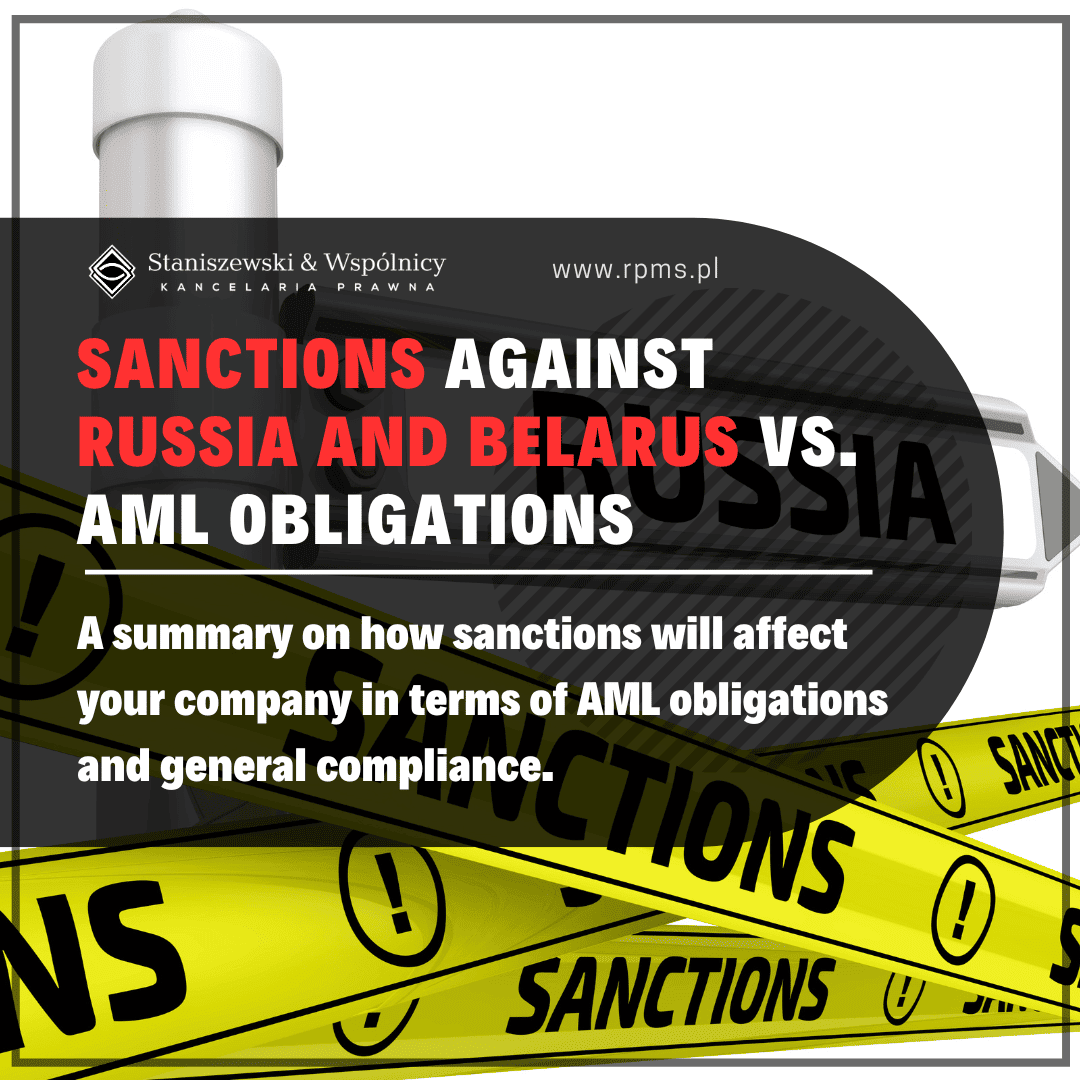Table of contents
Company liquidation is a multi-stage process aimed at dissolving a company. It often involves the voluntary resolution adopted by the shareholders, typically when the company is still solvent (if not, you should file an application for bankruptcy).
Most entrepreneurs opt to close a company when they wish to liquidate the company’s assets, relocate its headquarters to a foreign country, recover outstanding receivables, settle the company’s existing obligations, or conclude its business affairs. In other instances, company liquidation may occur due to a court order, bankruptcy declaration, or for valid reasons specified in the company’s agreement (e.g., expiration of the agreed-upon time).
Crucially, this process requires removal from the National Court Register (Krajowy Rejestr Sądowy; here and after as: ‘KRS’). Only upon removal from the KRS does the actual company liquidation take place.
What is the Company Liquidation in Poland?

The concept of company liquidation in Poland is regulated by the Code of Commercial Companies and Partnerships. It is a highly formalized process that requires completing a series of actions. The proper execution of these steps determines whether the company liquidation will be smooth and effective.
It is essential to note that the dissolution of a company is not synonymous with its liquidation. Certain circumstances must first arise to justify its dissolution. Only after that the liquidation procedure takes place, effectively resulting in the dissolution of the company.
There can be various reasons for liquidation. Among the reasons for resolving a company are the desire to salvage at least some of the company’s assets, halt the escalating debts, loss of licenses, concessions, or permits required to conduct business, achieve the economic goal for which the company was established, or the partners engaging in competitive activities against those conducted by the company.
The commencement of company liquidation occurs on the day when the resolution to dissolve is adopted by the partners (or general meeting), on the day the court’s resolution on dissolution becomes legally effective, or due to other causes leading to its dissolution.
During the liquidation procedure, the company retains its legal capacity or personality. It continues to exist, maintains its accounting records, and must prepare financial statements. Changes occur in the company’s operating principles. The company’s name must include the addendum “in liquidation,” and the liquidators assume the competencies of the company’s authorities. Although the mandates of supervisory bodies do not expire, the granted power of attorney expires, and a new one cannot be appointed.
The company’s assets, in the course of liquidation, cannot be divided among the partners. This will only be possible after satisfying or securing the creditors of the enterprise.
The primary goals of the company’s continued operation change significantly. From this point forward, the company’s objective becomes removal from the National Court Register (KRS).
As for the cost of company liquidation, it depends on the company’s situation. However, typically, one should consider a court fee (PLN 17 for each power of attorney for any action before the court or authority), notarial fee for opening the liquidation proceedings (around PLN 1500 for a notarial deed), court fees (approximately PLN 750 for applications to the court registry), fees for removal from the National Court Register and publication in the Court and Economic Monitor (around PLN 300-400), as well as fees for accounting services, including the preparation of required financial reports.
Stages of company Liquidation
Stage 1: Commencing Company Liquidation
At the outset, the partners resolve to initiate the liquidation process, marking the beginning of the entire process of dissolving the company. At each stage of liquidation, it is crucial to adhere to the provisions of the Commercial Companies Code. Therefore, the shareholders’ meeting must be convened properly, in accordance with the Code’s requirements. The adopted resolution should be drawn up as a notarial deed. From the moment of its adoption, the company is obligated to use its name with the designation “in liquidation.”
The appointment of liquidators takes place during the shareholders’ meeting. Only a natural person with total legal capacity can be appointed as a liquidator. This excludes individuals who have been lawfully convicted of specific economic crimes.
Typically, company management members are appointed as liquidators, but this is not mandatory. Shareholders can choose any person for this position, such as an experienced lawyer. Moreover, there are no minimum requirements regarding the number of liquidators, so many companies appoint only one.
From the moment of appointment, the liquidator is responsible for the entire process, acting on behalf of the company. In this regard, the liquidator replaces the management, assuming its powers and duties.
Most entrepreneurs opt to engage the services of a law firm from the beginning of the liquidation. The reason? The complexity and level of intricacy involved in this process. Concluding the business with legal assistance ensures greater security. It also represents a significant time and stress-saving measure. The support of an expert provides certainty that the entire procedure will be executed effectively and by the law, irrespective of the case’s complexity.
Stage 2: Submission of Notification to the Registry Court
The liquidator is required to submit a notification of company liquidation in Poland to the Registry Court. This should be the court responsible for maintaining the registration files of the specific company.
When applying with the National Court Register (KRS), the liquidator provides information regarding the method and date of commencing the liquidation. To do so, they must possess the CREWAN number of the deed and details from the resolution concerning the commencement of liquidation.
Mandatory components of the notification to the Registry Court include:
- Resolution of the partners regarding the dissolution of the company and the commencement of its liquidation.
- Resolution appointing liquidators, specifying their names, surnames, and how they are to represent the company.
- Evidence of payment of court fees.
- Consent of the liquidators to perform this function.
- Addresses of the liquidators.
If the application is complete and error-free, the registry court issues a decision requiring the addition of the words “in liquidation” to the company name. Additionally, the court mandates removing information about persons entering the company’s management and its procurators. It also necessitates entering information about the liquidators and how they represent the company.
Stage 3: Application to the Court and Economic Monitor
Company liquidation requires an announcement of the liquidation in the Court and Economic Monitor. This obligation also falls on the liquidators.
According to regulations, the announcement of the dissolution and commencement of the company’s liquidation must appear in the Court and Economic Monitor. It should include a call to the company’s creditors to report their claims within three months from the announcement date (this period cannot be shortened!).
The application should include the following attachments:
- The content of the announcement.
- An electronic medium with the text.
- Proof of payment of the fee.
The announcement must contain all necessary information. However, the data itself should not be overly lengthy, as the publication cost depends on the number of characters used (letters, numbers, punctuation marks, and spaces between them). The fee for one character is 0.80 PLN.
Stage 4: Notification to the Real Beneficiary Register
As a result of initiating company liquidation, the company’s name changes. It is essential to consistently include the designation “in liquidation” alongside the name. Additionally, it is necessary to inform the relevant tax office about the change (either online or through traditional means) and update the information in the Real Beneficiary Register, which can only be done electronically. Therefore, the liquidator must have a trusted ePUAP profile or a qualified electronic signature.
Stage 5: Preparation of the Opening Liquidation Balance Sheet
The next step involves preparing the opening liquidation balance sheet, following the provisions of Article 281 of the Code of Commercial Companies and Partnerships. The balance sheet must indicate all company assets according to their market value, providing an accurate insight into the company’s financial condition.
Moreover, the company is obligated to continue maintaining its accounting records. It’s crucial to note that the liquidation process can be lengthy, often lasting several months. Therefore, between the submission of the opening liquidation balance sheet and the dissolution of the company, the business must continue to prepare financial statements. The opening balance sheet itself is prepared as of the day of the commencement of liquidation.
Stage 6: Other Liquidation Activities
After submitting the balance sheet, the liquidators address the remaining outstanding matters of the company: settling debts, collecting all the company’s receivables, fulfilling its obligations, and liquidating (converting into cash) its assets. Despite concluding its regular operations, the company may still be involved in ongoing legal, administrative, and enforcement proceedings.
This stage involves liquidating the company’s assets, a fundamental task necessary for removing the entity from the National Court Register (KRS).
Note: During the liquidation process, liquidators are prohibited from initiating new business activities. The company can only embark on new ventures to conclude existing matters and proceedings.
Stage 7: Preparation of the Liquidation Protocol
Thanks to the liquidation protocol (a financial report submitted before the distribution of assets among partners), shareholders are informed about the remaining assets available for allocation. This part of the process occurs after securing or satisfying the company’s creditors.
In addition to accounting documentation, the liquidator must prepare a comprehensive report on the company’s operations. Furthermore, there might be a need to create a financial statement for the liquidation period, especially if the liquidation extends throughout the entire year.
Each of the aforementioned documents should be submitted to the Financial Documents Repository of the National Court Register (KRS).
Stage 8: General Meeting of Shareholders
The subsequent step involves convening a general meeting to adopt the following resolutions:
- Resolutions regarding granting discharge to the liquidators and members of the management board from their duties before the initiation of liquidation.
- Resolutions to consider and approve the entirety of financial reports and business activity reports.
- Resolutions regarding the distribution of assets.
- Resolutions to appoint a curator for the company’s books and documentation.
- Resolutions declaring the conclusion of liquidation and the company’s activities.
Stage 9: Distribution of Assets Among Shareholders
Closing all company affairs opens the path to the distribution of its assets. If assets remain after satisfying or securing creditors, they can be distributed proportionally according to the shares held by the shareholders. An exception to this rule exists if the company’s articles of association dictate otherwise.
Specific legal requirements must be adhered to in this stage as well:
- Asset distribution cannot occur before six months from the commencement of liquidation and the call for creditors to report their claims.
- Creditors who submit claims late (i.e., after the statutory three months) may still pursue their claims from the yet undistributed assets.
- Once creditors receive their due entitlements, they cannot pursue other claims against the company’s shareholders.
Stage 10: Closure of Liquidation
The conclusion of company liquidation involves the preparation of the final financial report and a summary of the liquidation process. The report must cover a short period (up to 2 days) after the resolution to distribute assets. This document certifies that the company no longer possesses any assets, as all resources have been distributed among creditors and shareholders.
According to Article 282 of the Code of Commercial Companies and Partnerships, liquidators must first conclude the company’s current affairs, collect receivables, settle liabilities, liquidate the company’s assets, and satisfy or secure creditors. After fulfilling all these obligations, an application can finally be submitted to remove the company from the National Court Register of Entrepreneurs.
The company ceases to exist upon entry, becoming legally effective and removing the entity from the Register of Entrepreneurs. At this point, it also loses its legal capacity and personality, and all its legal relationships come to a close.

Documents needed for company liquidation in Poland

The required documentation depends on the company’s specific situation. For example, in the case of a limited liability company (sp. z o.o.), submission to the National Court Register (KRS) includes, among other things, a resolution of the shareholders on dissolution, a resolution appointing a liquidator, a statement with the liquidator’s address for service, and evidence of payment of court fees.
Each company also has specific reporting obligations. The key documents include:
- Financial report as of the day preceding the commencement of liquidation.
- Opening balance sheet of the liquidation prepared on the day the resolution to commence liquidation is adopted.
- Annual financial report must be prepared at the end of each financial year.
- Liquidation report prepared on the day preceding the distribution of assets of the liquidated company.
For information on this matter, don’t hesitate to contact us directly. We will provide you with a detailed list of required documents.
Conclusion
Company liquidation in Poland is a time-consuming and intricate process that requires numerous steps and timely actions. Fortunately, this can be accomplished without requiring shareholders, management, and liquidators to travel to Poland. Such tasks can be entrusted to experts in corporate law. Comprehensive support proves essential, especially in cases of indebtedness, the need to settle employment matters, or conflicts among partners.
In need of professional assistance? Feel free to reach out to us. Upon receiving the necessary authorizations, we will handle everything on your behalf. Here’s what we can do for you:
- Provide comprehensive legal and tax support for company liquidation in Poland.
- Represent you in legal proceedings initiated by or against the company.
- Assist in the liquidation of the company’s assets.
Don’t hesitate to contact us for expert guidance and support.















